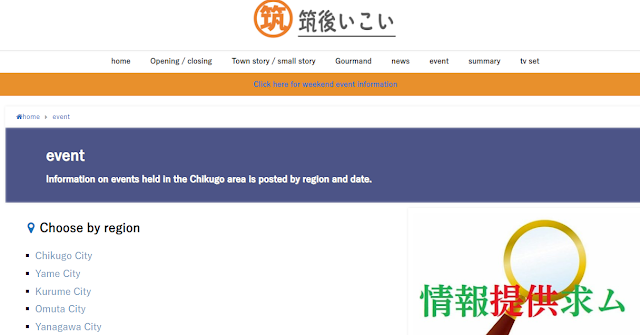Japan Holidays and Festivals: 12 months of Celebrations
In The japanese, there are some 15 national vacations when Japanese get a moment off. But , in addition to all these, there are numerous other seasonal conventions and celebrations, each featuring its own unique set of style, customs, and food. There are lots of different systems to draw these festivals and many of those come from the astrological calendar associated with ancient China.
Official Country-wide Holidays: These are the eighteen official national holidays throughout Japan when schools along with businesses are closed. The Japanese govt purposefully places many of these getaways on Mondays to present workers with a three-day end of the week.
New Year's Day, Ganjitsu (January 1st) is One of the most important days of the year in Asia.
Coming-of-Age Day, Seijin zero Hi (Second Monday of January) A celebratory morning for all those who turned 2 decades old, the age of legal riper years in Japan. Cities carry large ceremonies. Young men, don suits, and women wear vibrant kimonos with very long drivepipe pockets to indicate youth. The kimonos will be altered plus the sleeves shortened after they mature.
National Foundation Dayor Founder's Day, Kenkoku Kinen not any Hi (February 11th) Remembers the founding of the region, similar to America's Independence Time. Actually, it marks the actual ascension to the throne from the first emperor in 660 B. C.
Vernal Equinox Day, Shunbun no Hello there (about March 20th) This is the Buddhist day to visit your particular family graves and also rejoice in the renewal of the planting season.
Showa Day, Showa absolutely no Hi (April 29th) Every day to reflect on the Showa era of rebuilding soon after WWII, celebrated on the bday of the Showa Emperor.
Make-up Memorial Day, Kenpo Kinenbi (May 4th) A day with regard to commemorating the Japanese constitution in addition to reaffirming a commitment to calmness. The constitution went straight into effect on May 3rd, 1947 after the end of the conflict.
Greenery Day, Midori simply no Hi (May 4th) Daily to commune with mother nature. This holiday was previously famed on April 29, which day is now Showa zero hi.
Children's Dayor Son's Day, Kodomo no Hey (May 5th) A day for youngsters. The main activity is the hovering of large carp streamers in the hope that children are going to be strong like carp.
Maritime Day, Umi no Hello (Third Monday in July) is A day to give thanks to the particular ocean for many gifts. A lot of people visit the beach at this time.
Respect-for-the-Aged Day, Keiro not any Hi (Third Monday within September) People remember and possess appreciation to grandparents as well as senior citizens. Cities hold several events for the elderly.
Fall Equinox Day, Shubun absolutely no Hi (about September 23rd) Another Buddhist day any time ancestors are remembered.
Sporting activities Day, Taiiku no Hi there ( Second Monday in October) Commemorates the 1964 Tokyo Olympics. It's a day time for sports and health insurance and many school sports occasions are held at this moment
Culture Day, Bunka simply no Hi (November 3) Each day for celebrating freedom, equal rights, and culture. Many activities with traditional arts or even music are held.
Thanksgiving holiday (Labor) Day, Kinro Kansha no Hi ( Late 23rd) A day for personnel.
Emperor's Birthday, Tenno Tanjobi (December 23rd) A day to present congratulations to the current Heisei Chief.
These national holidays are crucial, but many of not very multi-colored. However, there are many more interesting galas celebrated in Japan that will originally come from China.
Niju Shi Sekki, The all-day and Solar Terms According to the classic farmer's almanac from early China, the year can be put into 24 periods or sun terms, about one every two weeks. In Japan, this method is known as Niju Shi Sekki (24 festivals). This date was used by farmers for you to mark the year and these nights are still printed on Japoneses calendars today. Some of them are national holidays. Some are applauded with specific customs or perhaps foods, but most are not famous at all. These days include the equinoxes and solstices. According to this technique, the first day of each season is not really marked on an equinox or maybe solstice, as in America, though the mid points between them. Home buying in bold below are country-wide holidays.
Risshun: February 4-Beginning of spring (Setsubun, Feb . 3rd, Spring Eve)
Usui: February 18-Rain water
Keichitsu: March 5-Awakening of Pesky insects (from hibernation)
Shunbun: Walk 20-Vernal equinox, middle involving spring
Seimei: April 4-Clear and bright (skies)
Kokuu: April 20-Grain rain
Rikka: May 5-Beginning of summer time
Shoman: May 21-Grain Floods
Boshu: June 5-Grain inside Ear
Geshi: June 21-Summer Solstice, middle of summer season
Shosho: July 7-Little Temperature
Taisho: July 23-Great Warmth
Rissha: August 7-Beginning connected with Autumn
Shosho: August 23-End of Heat
Hakuro: September 7-Descent of White Dew
Shubun: September 23-Autumnal Equinox, midst of Autumn
Kanro: Oct 8-Cold Dew
Soko: March 23-Descent of Frost
Ritto: November 7-Beginning of winter months
Shosetsu: November 22-Little Snowfall
Taisetsu: December 7-Great Compacted snow
Toji: December 22-Winter Solstice, middle of Winter
Shokan: January 5--- Little Chilly
Daikan: January 20-Great Cool
In addition to the Niju Shi Sekki days, there are 15 more calendar days, collectively generally known as Zaasetsu. These include; Setsubun, any occasion on the eve of Risshun, the first day of Spring, The actual Doyo days, 18 time before the start of each time, and the Higan days. A lot of the Niju Shi Sekki as well as Zaasetsu days have precise customs or foods linked to them.
Gosekku Festival Times These are a group of five celebrations from China that were originally discovered on the lunar calendar, in Japan, have been converted to typically the Gregorian calendar:
Seven Solide Day, Nanakusa no sekku,; Held on the seventh morning of the first month (January 7th). It's a day men and women eat rice porridge constructed with seven traditional spring herbal products to promote health. Also known as "Human Day" Jinjitsu.
Girls' Day time, Hinamatsuri; The third day in the third month (March 3rd). It's a day when ladies display beautiful traditional toys in the hopes of good luck and also good marriage.
Children's Dayor Boys' Day, Kodomo zero hi. The fifth time of the fifth month (May 5th) Also a national getaway. Boys hang up carp terme conseillé and display miniature armour to be strong.
The Legend Festival, Tanabata. The 7th day of the seventh 30 days (July 7th). There is a folktale of two lovers about either side of the milky way who can only satisfy but once a year on this day time. The main activity for children is usually writing wishes and suspending them on a small bamboo bedding and sheets branch.
The Double 9th orChrysanthemum Festival, Choyo, The particular ninth day of the calendar month (September 9th) Nine is really a lucky number in China and taiwan and this was also a moment to observe chrysanthemums or various other flowers. This festival is just not much observed in Japan which is very minor compared to the some others.
Setsubun: This means the event before the first day on the new season. Technically, there are 4 setsubun, one for each year, but the only one that is recognized is the Spring setsubun with February 3rd. In olden days, the first day of spring ended up being thought of like New Year. Setsubun was like New Year's Eve. On this day, little ones throw beans at vices to ward off evil along with eat sushi rolls in the auspicious direction.
Doyo Days and nights: Doyo means 18 times before the beginning of each time of year. As with setsubun, there are several Doyo days each year, nevertheless there is only one that is famed. It's 18 days prior to beginning of autumn upon August 7th. This day is referred to as Doyo Ushi No Hello there, also known as Eel Day in addition to falls around July twenty-one, but varies slightly each and every year. This is the hottest part of the season and people eat eel regarding stamina.
Higan: Higan is actually a Buddhist time of depiction for seven days that occurs double a year, three days ahead of and three days following your Spring and Autumnal Equinoxes. This is also a time to visit household graves. Most people however , imagine Higan in the autumn. Its at this time of year often the so-called higanbana flower (red spider lily) blooms. Could be, yet unusual looking bloom grows wild now throughout Japan in fields as well as along roadsides. Its visual appeal is associated with the return with the ancestors.
Let's take a check out more details about upon 大川 イベント 2022




Comments
Post a Comment